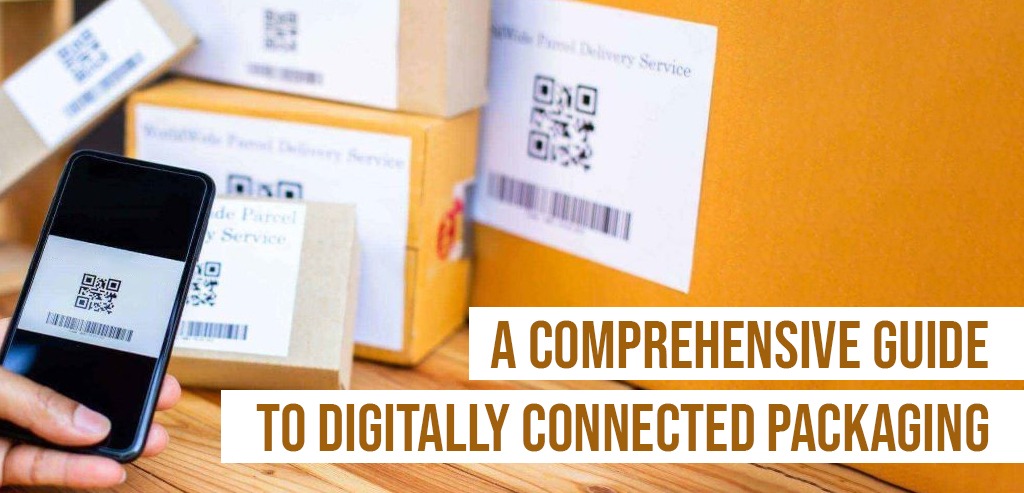In today’s tech-driven world, many businesses are looking for new ways to connect with consumers. Digitally connected packaging is one such innovative solution that allows brands to connect directly with their customers in a more meaningful way.
What is Digitally Connected Packaging?
At its core, digitally connected packaging is a combination of printed electronics and data storage technologies that enable brands to embed interactive features into their product packaging. By adding interactive features, such as NFC tags, QR codes, and augmented reality, businesses create a unique experience for their customers, allowing them to access additional product information, promotional offers, and more.
Benefits of Digitally Connected Packaging
The benefits of digitally connected packaging are numerous. In addition to creating an engaging experience that can be used to increase customer loyalty and brand awareness, digitally connected packaging also helps businesses gain a better understanding of consumer behavior. This allows brands to provide more accurate insights into their customer base and create more tailored marketing strategies that target specific demographics.
Additionally, digitally connected packaging is also more cost-effective than traditional packaging solutions, as it requires less printing and less material and is more durable than traditional options.
Technologies Used for Digitally Connected Packaging
There are a variety of technologies used to create digitally connected packaging. The most popular technologies include NFC tags, QR codes, and augmented reality.
- NFC Technology
NFC (Near Field Communication) technology is a short-range wireless technology that enables two devices to exchange data. NFC tags are small chips that can be embedded into product packaging and contain a unique identifier that can be used to provide customers with additional product information, promotional offers, and more.
- QR Codes
QR codes are two-dimensional barcode images that contain data that can be scanned using a smartphone camera. QR codes can be used to provide customers with additional product information, promotional offers, and more.
- Augmented Reality
Augmented reality is a technology that allows users to interact with virtual elements in real-world environments. Using augmented reality, businesses can create engaging experiences for their customers, such as displaying product information in 3D or allowing customers to virtually try on products.
How to Implement Digitally Connected Packaging
Once you’ve decided to implement digitally connected packaging, there are several key steps involved.
- Design Requirements
The first step is to create a design that meets all of the requirements of digitally connected packaging. This includes ensuring that all of the interactive features (such as NFC tags, QR codes, and augmented reality) are properly placed and integrated into the packaging design.
- Printed Electronics
Printed electronics are necessary to enable the interactive features of digitally connected packaging. This includes the integration of NFC tags, QR codes, and augmented reality.
- Data Storage
Data storage is also necessary to store the information needed to provide customers with additional product information, promotional offers, and more. The data storage can be located on the physical product packaging or remotely on the cloud.
Best Practices for Digitally Connected Packaging
Once you’ve implemented digitally connected packaging, there are several best practices that should be followed to ensure its success.
- Designing for Interactivity
The design of digitally connected packaging should be focused on creating an engaging experience for customers. This means that the interactive features should be properly placed and integrated into the packaging design in order to maximize their effectiveness.
- Connecting with Consumers
One of the main goals of digitally connected packaging is to connect with consumers in a meaningful way. This means that brands should take advantage of interactive features to provide customers with additional product information, promotional offers, and more.
- Measuring Success
Measuring the success of digitally connected packaging is essential in order to determine if it is providing the desired results. Brands should measure various metrics, such as engagement rates, conversion rates, and customer feedback, to gauge the effectiveness of their digitally connected packaging.
Conclusion
Digitally connected packaging is an innovative solution that allows brands to connect directly with their customers in a more meaningful way. By adding interactive features, such as NFC tags, QR codes, and augmented reality, businesses can create an engaging experience that can be used to increase customer loyalty and brand awareness. Implementing digitally connected packaging requires designing for interactivity, connecting with consumers, and measuring success. As technology continues to advance, brands should look for new ways to leverage digitally connected packaging to create even more engaging experiences for their customers.

